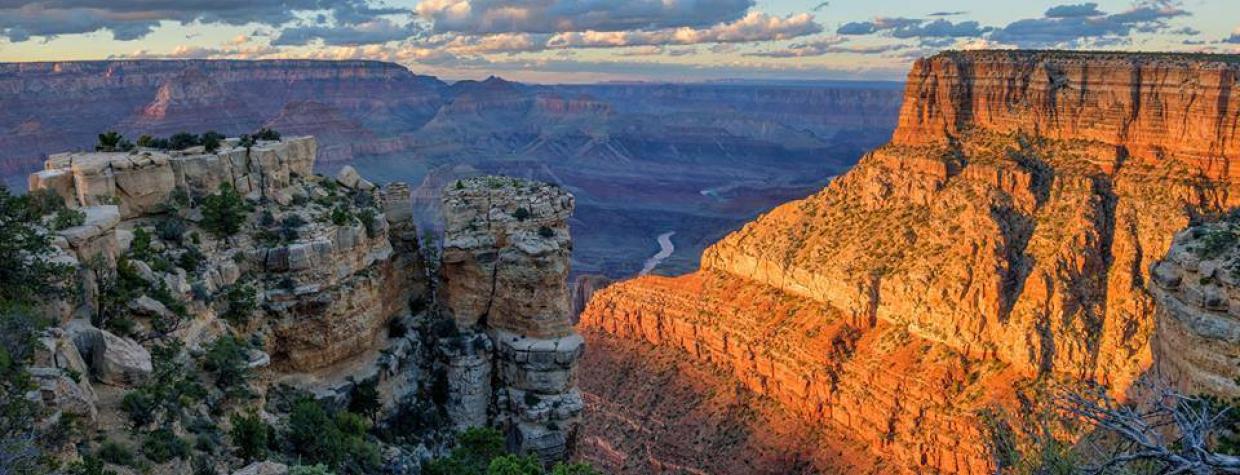EDITOR'S NOTE: One hundred years ago today, Grand Canyon National Park came into existence. Forty-one years later, the following words appeared in our magazine.
No writer of worth has ever seriously attempted to describe Grand Canyon; no artist has ever adequately portrayed it. None ever will. For while it is the most compelling single area on the earth's surface, it is not a landscape.
The regal ermine-cloaked Rockies; the somber moss-hung swamps and bayous of Florida and Louisiana; the romantic orange groves of California; the sweet clean meadows of the Ohio; the majestic bluffs along the Hudson; the poignantly beautiful prairies of Kansas; the dreamy plantations of the Deep South; the rugged grasslands of the Far West — all these and a hundred others offer true landscapes. Each has a distinctive tone, key, spirit and character which hold true and unique despite their infinite variations. They can be known, loved and partially expressed.
The Grand Canyon is beyond comprehension. No one could possibly love it. It is not distinguished by any one dominant quality. It is not unique in the individual sense. It is universal.
One cannot define humanity. One can only define the terms of humanity expressed by its many components: beauty, cruelty, tenderness, strength, awe, horror, serenity, sadness, joy. But to define life — the blended summation of all its infinite aspects — is impossible.
The Grand Canyon in nature is like the humanity of man. It is the sum total of all the aspects of nature combined in one integrated whole. It is at once the smile and the frown upon the face of nature. In its heart is the savage, uncontrollable fury of all the inanimate universe, and at the same time the immeasurable serenity that succeeds it. It is creation.
Never static, never still, inconstant as the passing moment and yet endurable as time itself, it is the one great drama of evolutionary change perpetually recapitulated. Yet the Canyon refutes even this geological reality. In its depths whole mountains contract and expand with the changing shadows. Clouds ebb in and out of the gorges like frothy tides. Peaks and buttes change shape and color constantly in the shifting light. None of this seems real. It is a realm of the fantastic unreal.
— From The Canyon, by Frank Waters, Arizona Highways, June 1960

